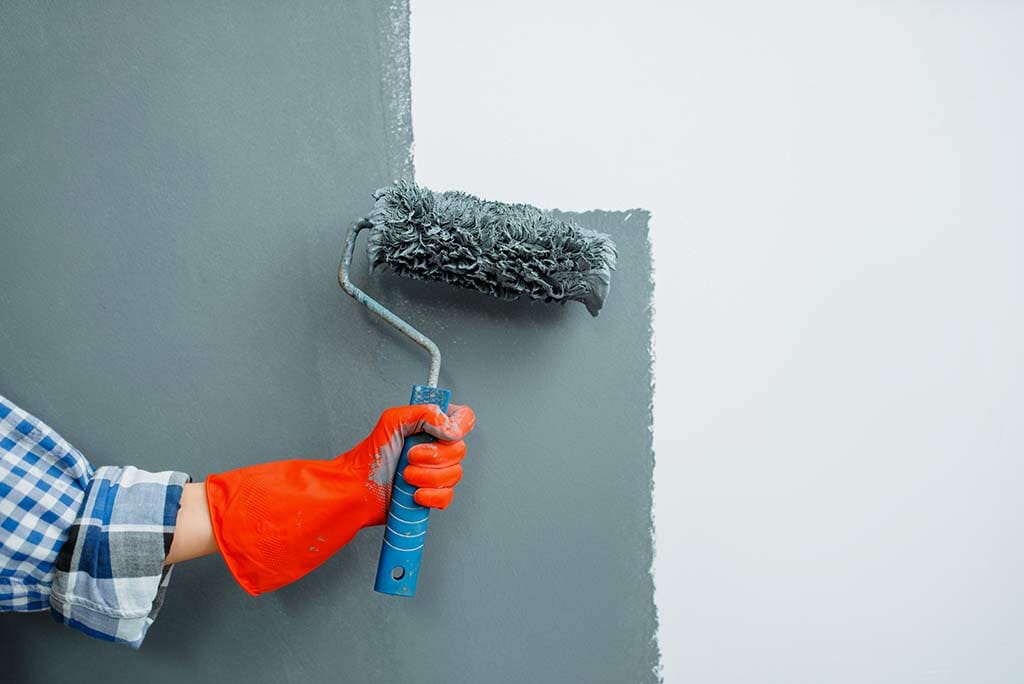
Every successful painting project begins long before the brush meets the wall. Prepping is not just a preliminary step; it’s the foundation upon which the quality of the entire paint job rests.
A common misconception among many homeowners is that painting is a straightforward task – just open a can of paint and start. However, without proper preparation, even the most vibrant coat of paint can appear uneven, and its longevity can be severely compromised.
For a paint job that stands the test of time, meticulous preparation is essential. The wall you’re about to paint is more than just a canvas; it’s a surface that needs to be optimized to hold the paint correctly.
It might be tempting to paint over old paint, but cleaning walls before painting is crucial. This ensures that the new paint adheres well and looks smooth. Remove any cobwebs, wipe away dust, and clean off any grime or grease.
The wall surface must be smooth and free from defects for the best results. Nail holes, for instance, can disrupt the smooth finish of a paint job. Simple issues, like popped nails or small dents, might seem insignificant but can significantly affect the final appearance.
These blemishes can be easily fixed with a putty knife and some joint compound. After filling, ensure that the wall surface is level and free of any excess material.

Even when the walls seem clean, there’s a good chance they hold onto hidden debris that can affect paint adherence. Here’s how to ensure your walls are truly paint-ready:
Scrubbing the Walls: A mixture of warm water and a mild detergent can work wonders in removing invisible residues from the wall. A gentle scrub helps in removing any lingering grime that can disrupt the paint application.
Sanding the Surface: After cleaning, using a sanding block or a piece of fine-grit sandpaper to lightly sand the wall can make a significant difference. Sanding not only helps remove any minor imperfections but also creates a slightly rough surface that paint can adhere to more effectively. If you’ve used a drywall patch or joint compound to fix any defects, ensure those areas are sanded smooth.
Post-Sanding Cleaning: Sanding, though beneficial, can leave behind dust that might interfere with the new paint. A quick wipe-down with a damp cloth will remove this residue, ensuring a clean slate for painting.
Every great masterpiece requires attention to detail. And in the realm of painting, one of the essential details is taping. Before your brush touches the wall, ensuring areas you don’t want painted are adequately protected can make all the difference.
The primary purpose of taping is to create sharp, clean lines, especially in places where the wall meets the ceiling, floor, or trim. To achieve this, it’s essential to apply painter’s tape carefully, ensuring it’s smooth and adheres well to prevent any paint bleed.
However, even with the best intentions, taping can have its pitfalls:
Leaving Gaps: If the tape isn’t applied smoothly or if there are gaps, paint can seep through, leading to an uneven line once the tape is removed.
Overstaying Its Welcome: While painter’s tape is a boon, leaving it on too long can be problematic. If tape is left on a freshly painted wall for an extended period, it may peel off some of the new paint during removal.

Painting isn’t just about changing the color of a wall; it’s about understanding the nuances that lead to a flawless finish. It’s more than just moving furniture to the center of the room or deciding on painting the ceiling first or last. It’s about ensuring every square inch is primed for perfection.
Professionals, like those at BCI Painting, bring a depth of expertise that’s honed over many projects. We have insights into the best practices for each step of the process, from paint selection to final touch-ups.
Our thorough prep work ensures that the paint not only looks great but also lasts longer. Moreover, a professional touch ensures uniformity in the paint job, with no missed spots or uneven coats.
The success of a paint job is directly proportional to the preparation that goes into it. Whether it’s fixing imperfections, sanding, cleaning, or taping, each step lays the foundation for the next. Cutting corners or rushing through the prep can result in a less-than-perfect finish.
For homeowners considering a paint project, it’s essential to understand the time, effort, and attention to detail that preparation demands. And while DIY has its merits, sometimes, the expertise and skill of professionals can be invaluable.
Want a wall that stands as a testament to perfection? Trust BCI Painting. From prep to final brush stroke, we ensure excellence every step of the way.
Dive into a world where color meets craftsmanship. Contact us today!